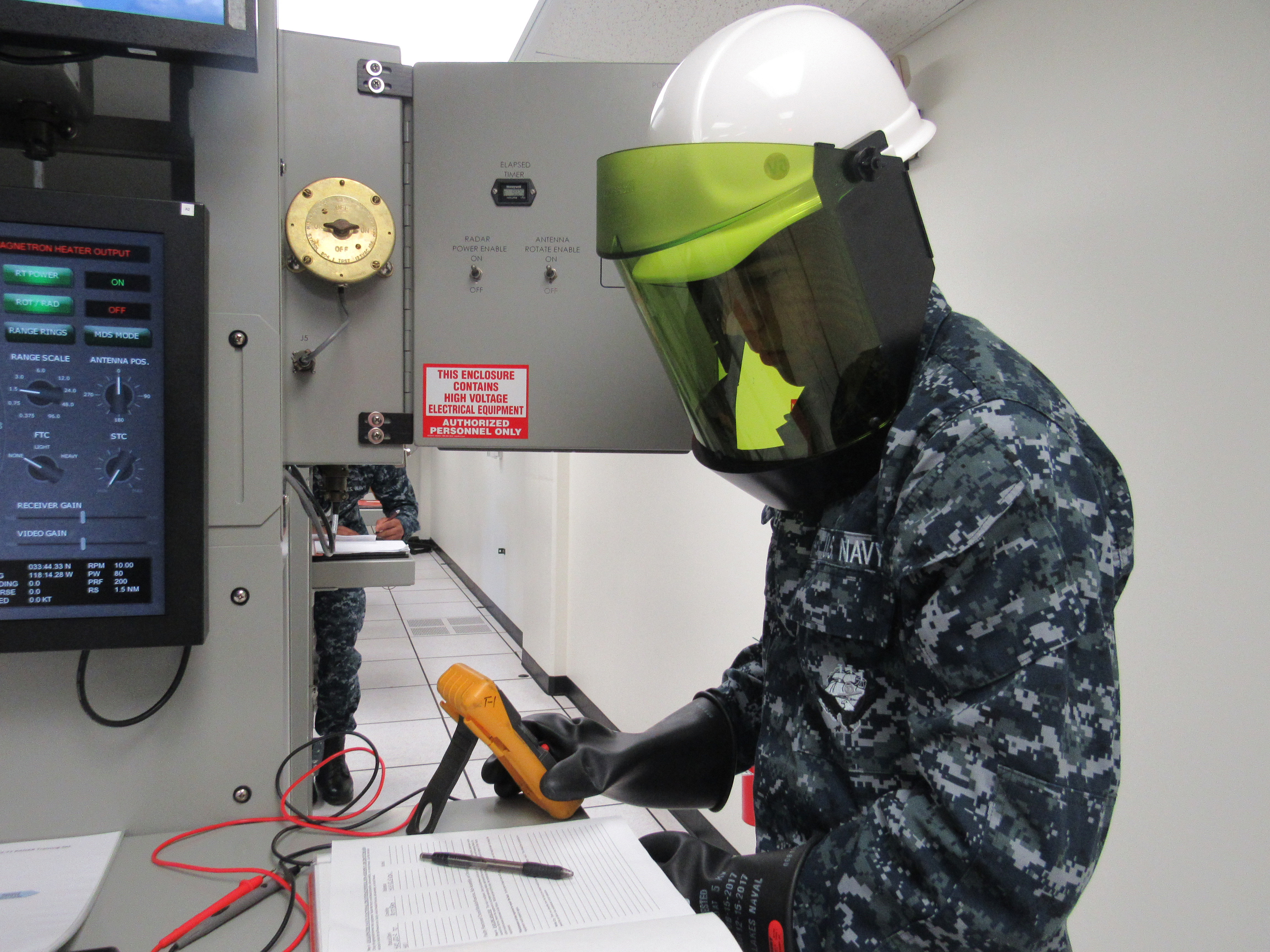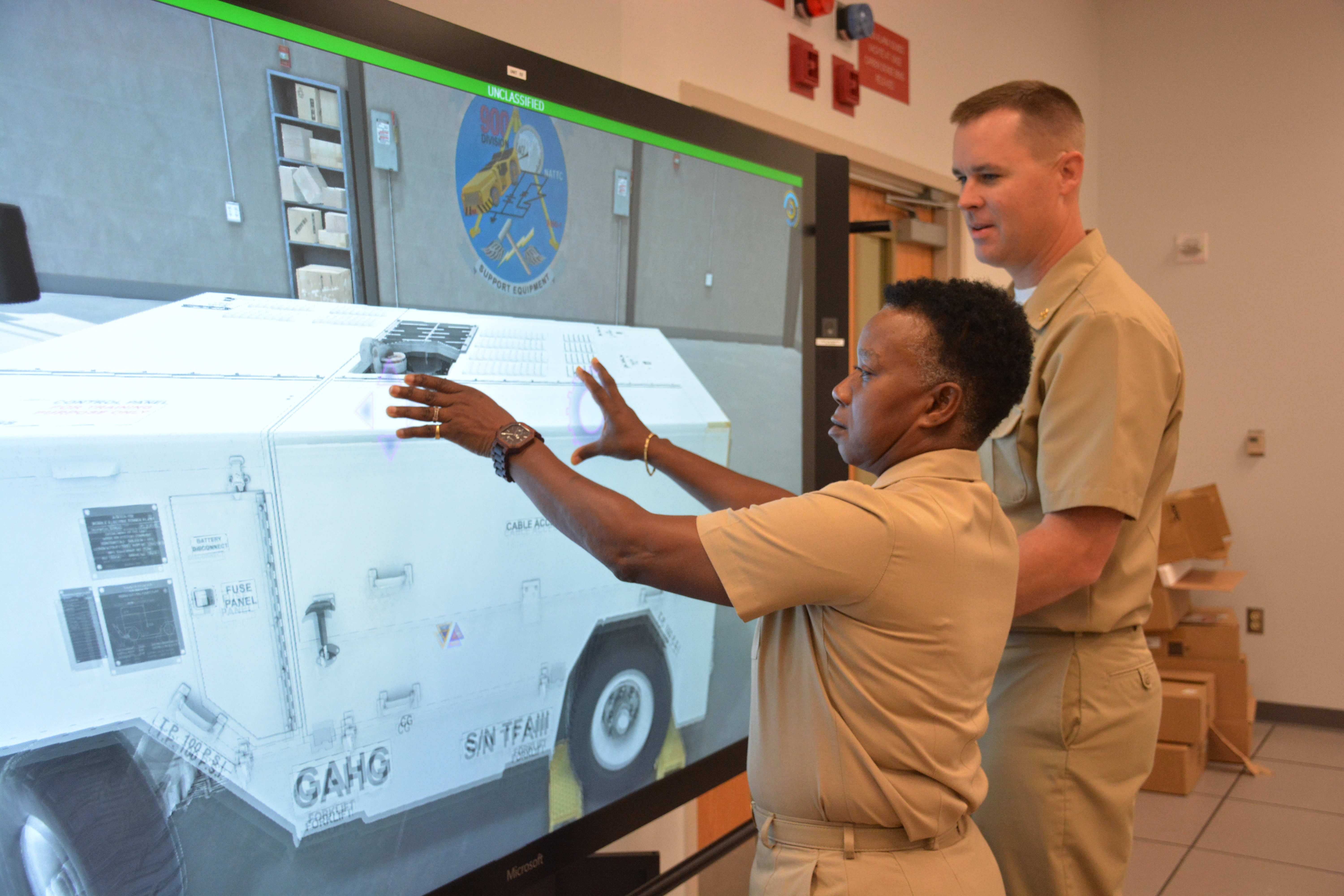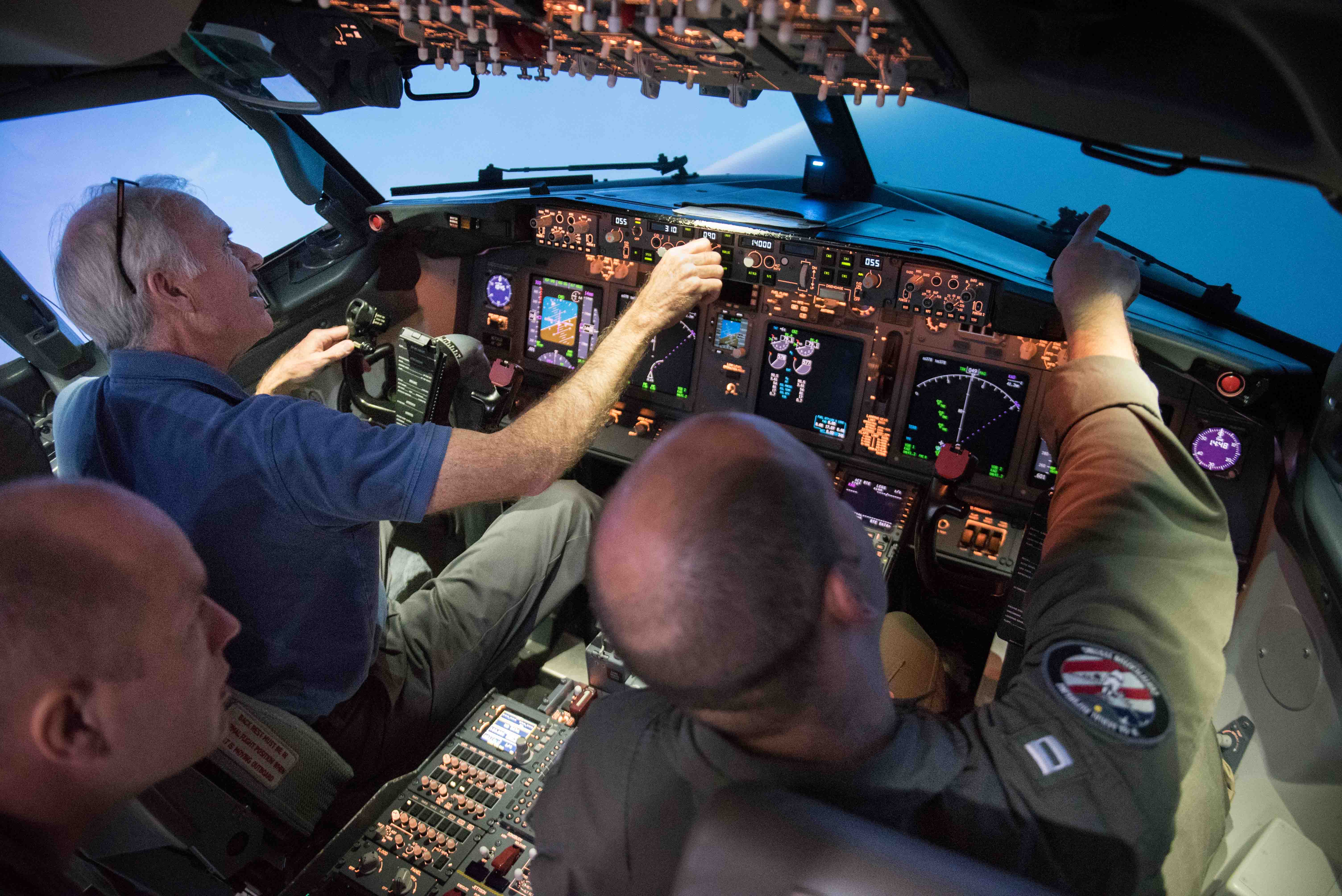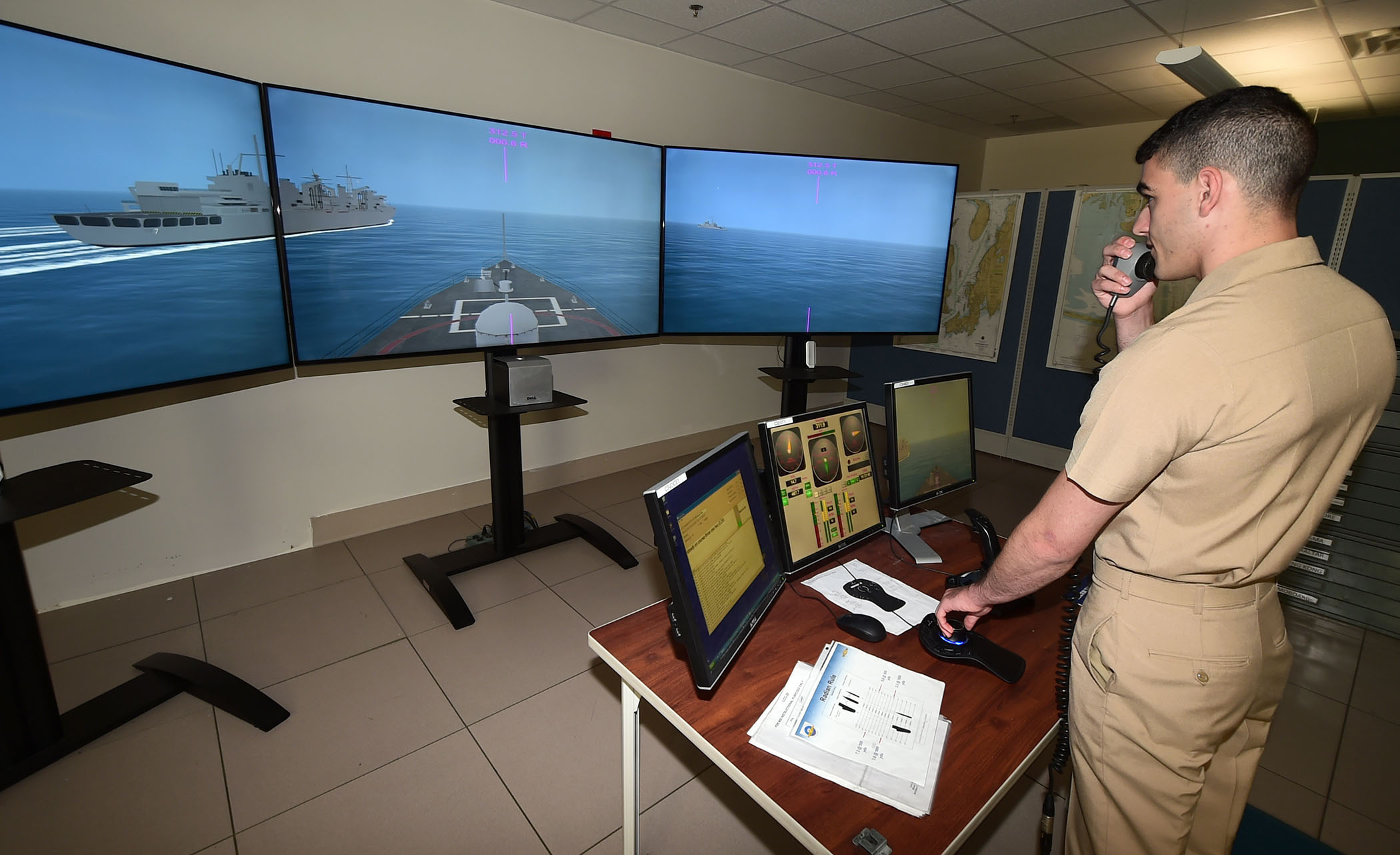
The Navy is seeking virtual and augmented reality training tools that are both integrated across warfare domains and capable of measuring proficiency and improvement.
In the wake of the surface community’s recent Comprehensive Review noted deficiencies in training and preparedness for operational missions, Vice Chief of Naval Operations Adm. Bill Moran told USNI News that “we are committed to getting after this and making sure that Big Navy is applying the right resourcing and pressure to deliver better training products, better training tools so that sailors get the right training at the right time, so they can improve themselves as they go.”
Moran spoke at the Interservice/ Industry Training, Simulation and Education Conference (I/ITSEC) in Orlando on Wednesday and told USNI News in a phone interview afterward that the Navy has fielded some virtual and augmented reality trainers throughout the fleet but is committed to procuring more systems faster.
“If you go to Groton, Conn., today and look at basic training in ‘A’ School in Groton for our enlisted submarine force, you’ll see that this technology is out there. We’re doing it in places around, in spotty places around the surface community. Aviation’s doing it in A School in Pensacola today, in a couple of the rates, and we’re piloting those efforts and measuring whether their performance and their retention of knowledge is better than it was in the old scheme,” Moran said.
“In every case I’ve been briefed on so far, there’s significant – and I mean two or three times better – retention of knowledge using this technology versus older methods. So they’re out there, but it’s a big organization, there’s a lot of units that are spread all over the planet, but we have a very deliberate approach to try to move faster – and I told sailors, once they see this technology they’re going to demand it faster, and I don’t blame them.”

As the Navy increases its use of these training tools, though, Moran said three major elements were important to keep in mind.
First, he said, it’s not enough that the trainer looks realistic and appealing. It has to have a way to quantitatively evaluate users’ performance and provide useful feedback.
“I think the technology in terms of the virtual reality that they can produce today is eye-watering. If you have kids, you can see it in the way gaming has come so far; it’s pretty realistic when you look at it on a widescreen tv, high-definition tv. And that’s great, and it makes it more real and arguably more effective in many cases,” Moran said.
“But what I’m challenging industry to think about is, how does that training system, how does that technology help us measure performance and measure proficiency in a way that we can then provide immediate feedback to individuals and teams so they can get better, they can learn faster? So that’s another aspect of this technology as it develops. There are certain attributes we want to make sure are embedded in that training, and one of them is how do you measure and evaluate performance.”
Second, the VCNO said, is that the equipment needs to be portable. Though the Navy has already begun fielding some systems, “we haven’t proliferated that capability throughout the fleet, and we haven’t proliferated it in a way that makes it readily available to sailors when they’re pierside and even in some cases when they’re at sea – some of this technology can be put on ships, submarines and taken with squadrons when they deploy. There’s huge opportunity here to take advantage of the virtual world and the augmented reality world that doesn’t require you to build large buildings with full-motion video simulation that has been used in the past that costs tens of millions of dollars. These are much more portable – they work off a laptop, in some cases they work off large video screens called MRTS (multipurpose reconfigurable training system) trainers.”
This ability to be portable is key to the Navy’s “Ready Relevant Learning” initiative, which Moran said “tries to get the right training at the right place at the right time for individual sailors and teams” – which in many cases means putting the training systems at the pier or on the flight line for a sailor to train as his or her operational schedule allows.

Third, Moran said, the training systems need to leverage common standards and interfaces, so cross-domain training can be conducted with whatever systems each community ends up buying.
“A lot of our training, even live, virtual and constructive, is done in a stove-piped way – air domain, surface domain, submarine domain and others,” VCNO said.
“We have to turn those stovepipes, those vertical cylinders of excellence if you will, and flip them on their side so we get a horizontal integration across those domains to get the full effect of the training – because you’re not going to fight in the future in one domain, it’s a multi-domain fight. So from a live, virtual and constructive standpoint, we have to be able to connect what the surface community is doing with what aviation is doing and so on and so forth, and to do that you have to have an organization applying standards and architectures, networks, that everybody gets to plug into. And that’s a big effort going on right now.”
He said the Digital Warfare Office, led by Margaret Palmieri, would look at integration and interoperability across these systems, developing the standards so that industry can design tools that plug into that common architecture. Director of Integrated Warfare (OPNAV N9I) Rear Adm. James Kilby will oversee the resourcing side of acquiring these trainers, with the directors of air, surface and undersea warfare already working on supporting program-of-record line items in the budget for their own warfare domains.
Moran said that improving training tools and techniques will be an important change coming out of the surface community’s comprehensive review but would not be the most urgently addressed item in the short term. Moran heads the oversight board that will ensure nearly 60 recommendations are studied and implemented and he said the first meeting on Tuesday evening sought to prioritize the recommendations and delegate who would address which ones – with “safe and effective operations of the fleet” topping the list of priorities.

“There are 58 or so actions listed in the Comprehensive Review. Last night started the process of making sure we’ve prioritized them about what’s the most urgent need and what’s a longer-term need to make sure we don’t do this like a kid’s soccer game and just try to chase the ball around. We’re trying to put it in a way that will make the most sense to those that are resourcing the efforts but also to our COs in the fleet who, when they see these efforts come out, these actions taken, that in their eyes it’s helpful to them as commanding officers to better train and better protect their crew,” Moran told USNI News.
“The most urgent thing is to ensure we are providing COs with the added policies that help them with what I would characterize as a wider safety bubble around how they operate the ships. Making sure that ships that are going to sea to operate on missions are certified fully for those missions. So recently we’re in the process of resetting those certifications in the Western Pacific … They’re common sense approaches to ensuring that the ships and the commanding officers have what they need to operate safely.”





